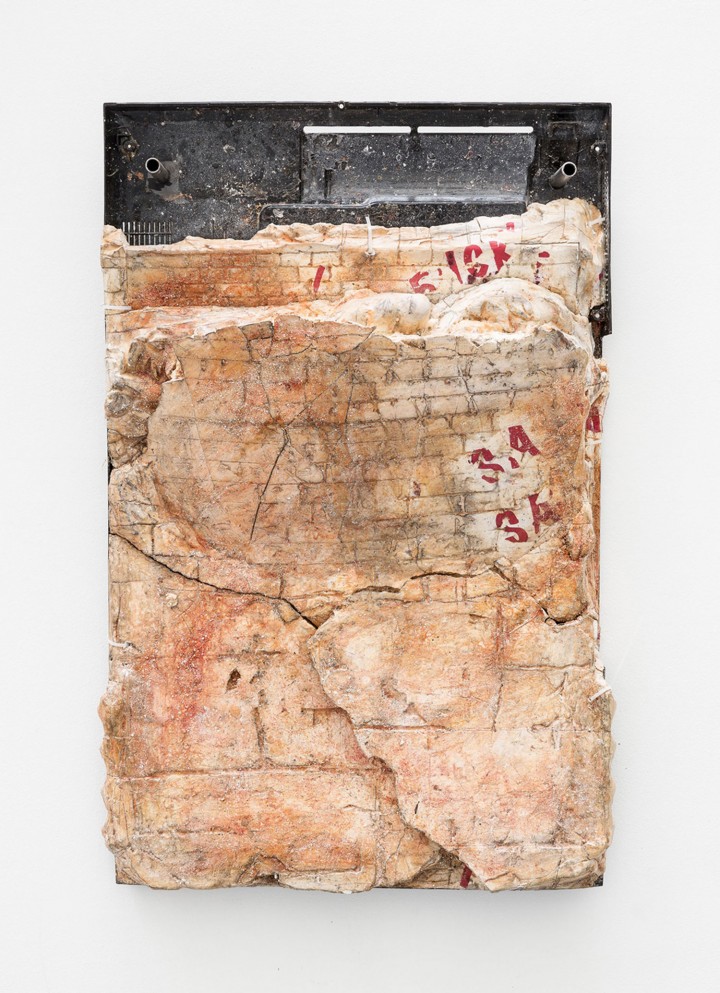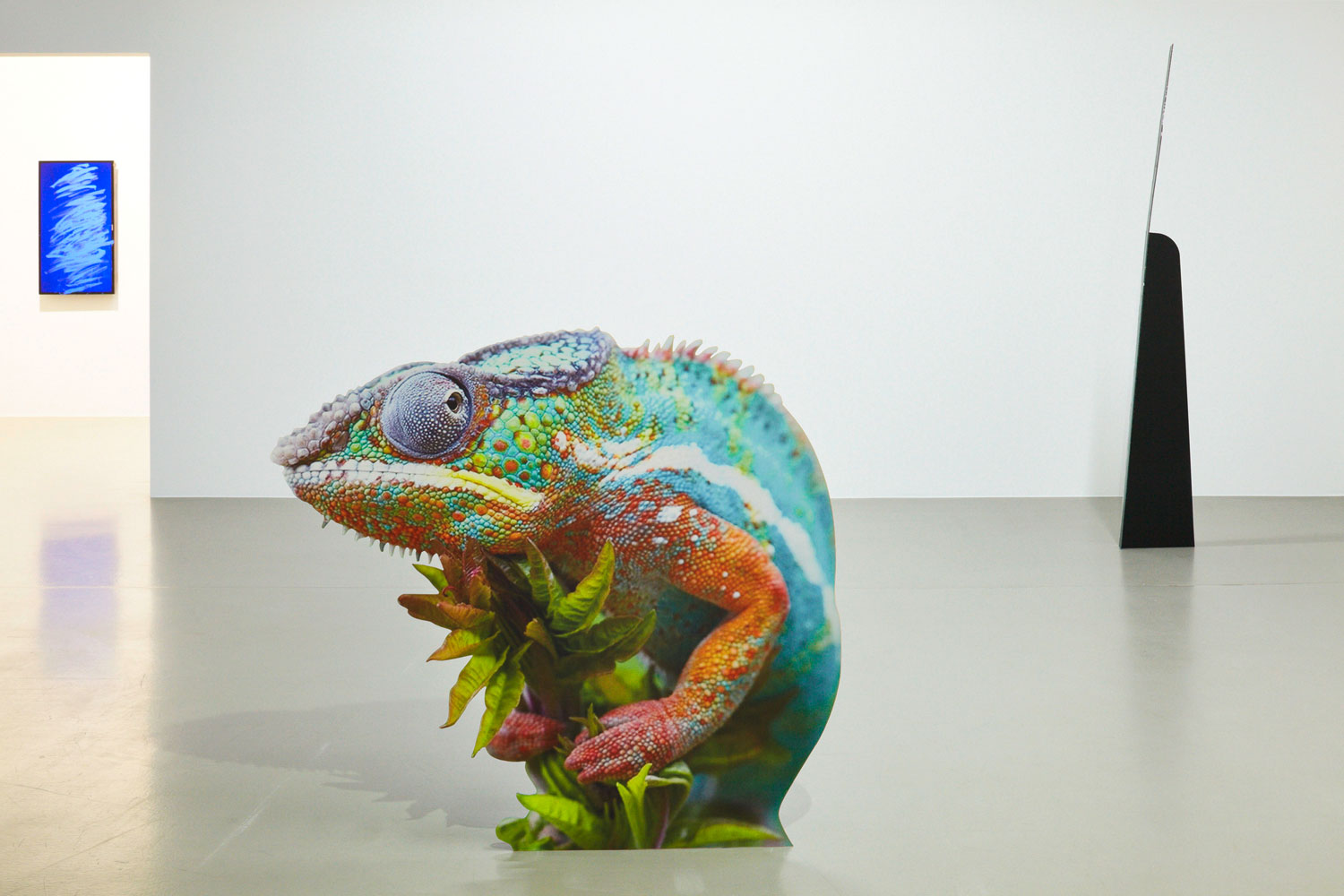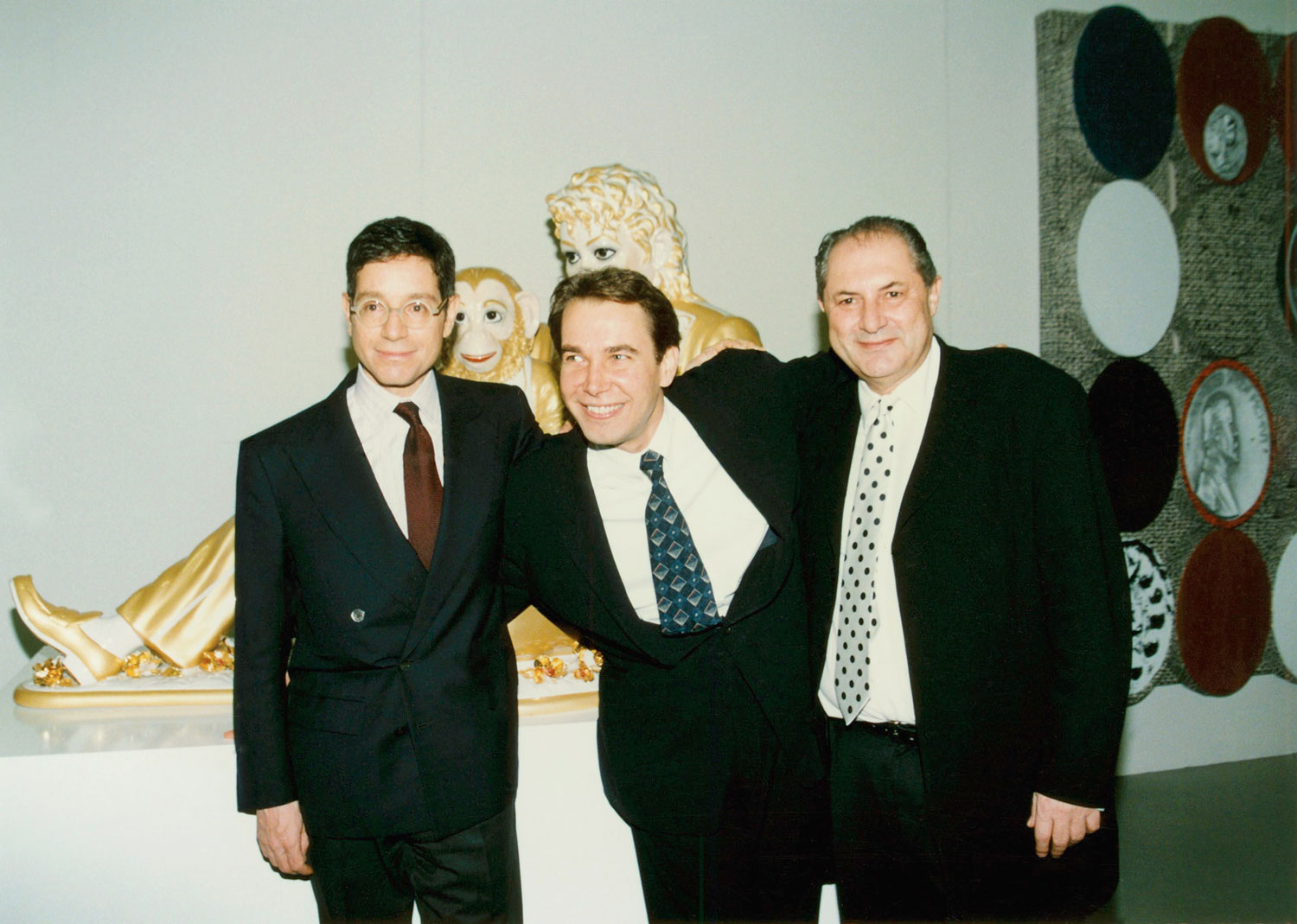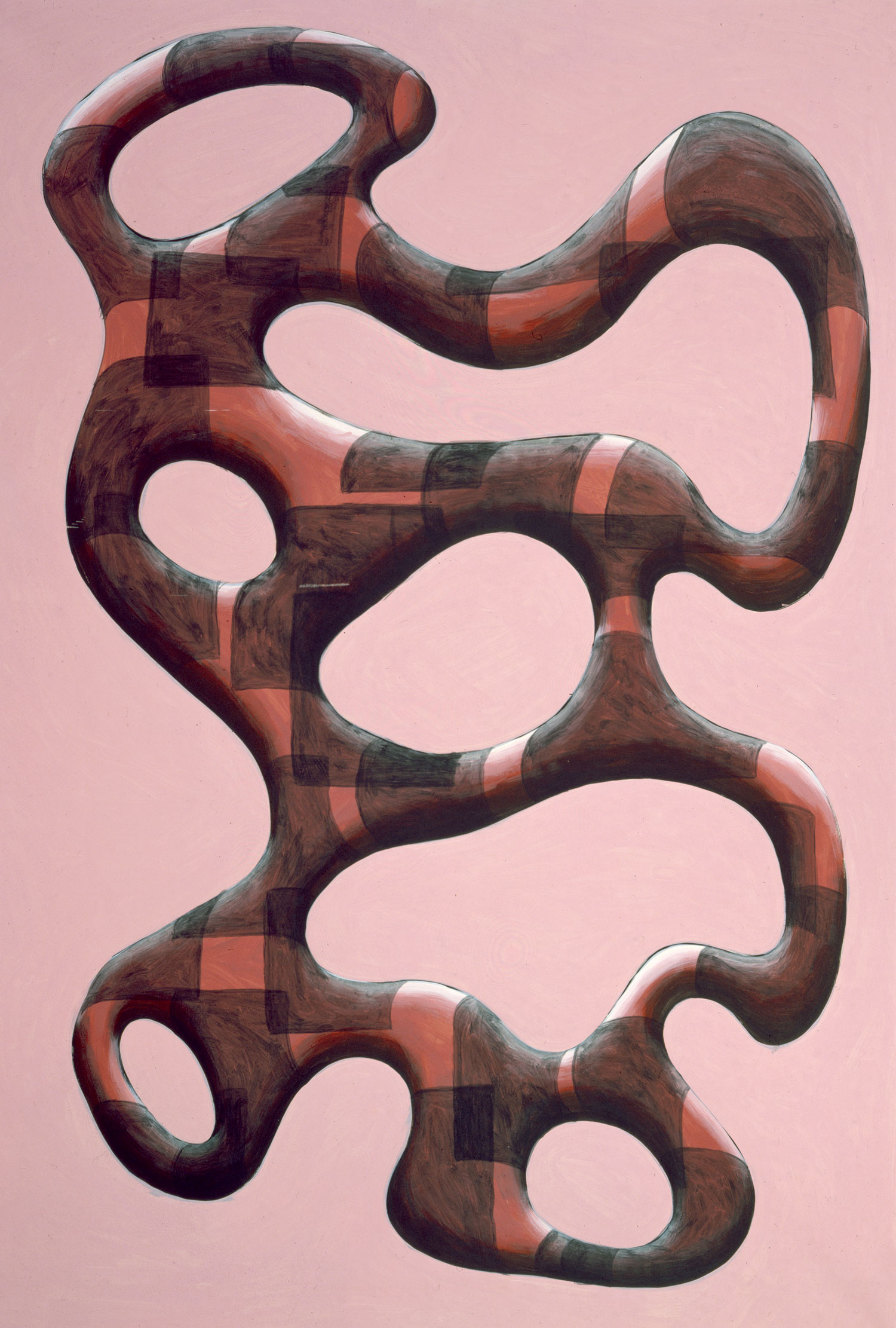Michele D’Aurizio: Are your artworks dead or alive?
David Douard: They are not dead or alive, but perhaps stillborn.
MDA: So, are they supposed to disgust or instill a feeling of pity in the viewer?
DD: Animism is a notion that I found to suit the works, insofar as their skin curtains an underground life: they are no longer vital, but are trapped in an inert, intense vegetative state. This state is a foundation for resistance — often inertia is indeed the most stubborn resistance. I am not asking the viewer to look at my artworks as dead objects, but to understand them as fossils, imprints of his/her daily experience: the objects are not dead because the viewer is “together with” them.
MDA: Sickness and disease are recurring topics in your art — as in a constant search for a wavering state of matter. This seems symptomatic of a rather pessimistic understanding of life on earth.
DD: The idea of disease came to be a sort of tool that allows me to approach things, to give shape to objects and to load them with meaning, as in a flow of contaminations. For me disease is a conceptual framework: it orders my thoughts, it grows and teems inside me. In this sense, it is not a pessimistic concept but rather more of a productive means to an end. Moreover, I like the idea that a threatening circumstance could turn out to be positive: depicting the starting point of a process of decay or a demise, to be constructed as a feeble inertia.
MDA: What materials determine your art?
DD: I work with materials that I feel might have a communicative potential. For example, I search for signs of contamination and materials that allow this to become visible. I often choose poor materials, such as plaster, wood, steel… I’m not interested in the finish of a product — my aim is to render a poor material into an effective object, by infecting it with meaning. In this regard I employ narrative and poetry, which I inject literally into the plaster or the living matter, as if the material is being corrupted by a subject. In the end, the surface of the work develops an impure skin or “acne,” the subject rises onto the surface as an abstract, silent, sculptural efflorescence.

MDA: So do you believe that inorganic compounds can secretly feel emotions?
DD: Emotions are rooted within materials: they move within them, are contracted by them and give them shape. The surface of my work is a result of these movements: acne pimples, sweat drops, sores. They are all symptoms of what is happening inside and is arising on top, producing a kind of significant form of disorder. The idea that inorganic materials can start acting as affected objects seems to me a form of activism against the established order of things. Technological objects, for example, are so exciting: they invade our lives and force us to establish relationships with them that go beyond daily habits, becoming almost like voodoo objects.
Within the search for contamination, digitalization is a source: wiring the works expands them onto a flow, stimulating movement through devices. But the kind of correspondence that digital tools establish in relation to texts and materials is more akin to an idea of re-appropriation and hacking. The mass of digital tools around us is so immense that it could even be understood as a broadcast network of our impurities; corrupt cables, screens, projectors are introduced as a kind of mystical force and as re-appropriated objects.
MDA: Indeed, in your installations, you often incorporate technical devices — such as video screens, players, sound domes — along with display elements — benches and rugs above all. I always wonder if you are looking for specific shapes, or more for specific scenarios; and if you consider yourself more a sculptor or a storyteller. In the installations, the autonomy of the sculptural work often seems affected by a muscular staging sensibility. But where does the autonomous work begin and where does the exhibition display end?
DD: The works in the studio gradually turn into hybrid display structures; videos are often chaotic and disjointed, connected but striving towards a certain level of autonomy. The tension between display elements — as you mentioned, benches, frames, support structures (often borrowed from the aesthetics of fair display) — and sculptures that are in contrast informal, brutal, twisted — between an objective presentational strategy and deeply anarchic objects — allows me to depict both the interiority of objects and the subjects that are haunting them.
I am also interested in the domestication of my works, which might seem remote and dry, but in that communal field of the exhibition space, approaches intimacy. The installation acts eagerly to develop direct involvements: the sounds, the words, the images; and everything else in the space strives to actively provoke to the point of exhaustion. Maybe this renders a malleable viewer, a kind of wanderer.

MDA: Who are the subjects who sleep in your works?
DD: I used to obsessively follow several rioting movements around the globe, and it has found its way into my work in the form of fragments of words from the web, some jpeg files, anonymous things… And, step by step, I wanted to build a sort of “legion” with them. It is something like a sub-network of emotions. It is rather appropriate to use the word “sleep,” because it is indeed a quiet strength, a swarm without any outward output.
MDA: And what about the teenager?
DD: Being teenage is a lost joy, remaining in our minds as something that once happened and that we strive to find again. I try to embody this in my work, filing keepsakes of forgotten stories, patterns of life that pivot on the fancy about those teenage years that we had never truly experienced. It is also worth mentioning the construction of the self as affected by the repression of the other self: to live in the eyes of the other, hiding and rioting without purpose and ethos. Thinking about social movements that impact our quotidian existence, teenagers remain the princes, the first heirs of pure freedom. This is why I find it interesting to place them as storytellers: their voices force things to reveal themselves.
MDA: What do you remember about the riots in the Paris banlieues?
DD: This is a very good question, because I feel very sympathetic to the Parisian suburban landscape, a place where I am affected by local behavioral patterns that then influence my practice. Primarily due to having lived and worked there for quite some time now, it is what I consider to be my home. Suburbs are for me landlocked areas of modern cities, a hybrid density where hyper-organized city dormitories exist in parallel with social madness, bursting identities and primitive rebellion — I empathize with the violence that hides in the suburbs because it is a form of unspoken melancholy. Here we stare at the city from afar: we are frozen out, where we feel protected from the pressures and hectic rhythm of the city. Certain things persist in the suburbs: the young people have full territorial control; they move in masses and retain the power to break the city.
I feel that the riots could begin again tomorrow. I see the potential for this. There is a wandering and unstable subject that lingers, which nags and torments to echo the intensity of external events. I often think about a work of Martin Kippenberger, New York Seen from the Bronx (1985), a tiny model of Manhattan…

MDA: In the “Youth Uprising” manifesto, Isidore Isou wrote that young people are “any individuals who do not yet fit into their function, who agitate and fight to attain the desired position.” Do you feel you fit into any function?
DD: I’m interested in this idea of transition, to crystalize it into an idea of sculpture’s resistance, a kind of death threat. My practice is indeed close to an adolescent’s attitude, insofar as it fights in the face of its own future, while teeming with impurities, flaws and contamination. I’m attracted to the notion of an organization that moves towards anarchy. In art, I would say, as an organized corporation of rebellion with its own language, its own codes. It is that which aims to erode sedimentary structures.
Regarding my generation, there are three distinct possibilities: either we fight all the time and then we occupy the necessary moral view, or we just adhere to the rules and codes and then produce; or finally we just become insane. In terms of being insane, I try to imagine an organization of this madness, to consider it very seriously. This permits me to speak about strangeness, broken computer science, “trans-genre” relationships, obsolete rituals surrounding urban myths. All of this communicates when things are hidden and corrosive: including logos, codes and even demonstration devices… Which is once again a materialization of contamination. In regards to Isidore Isou — and to add Robert Filiou — my attitude stems from a belief in poetry, and through this I hope to show that the works are not dead.





